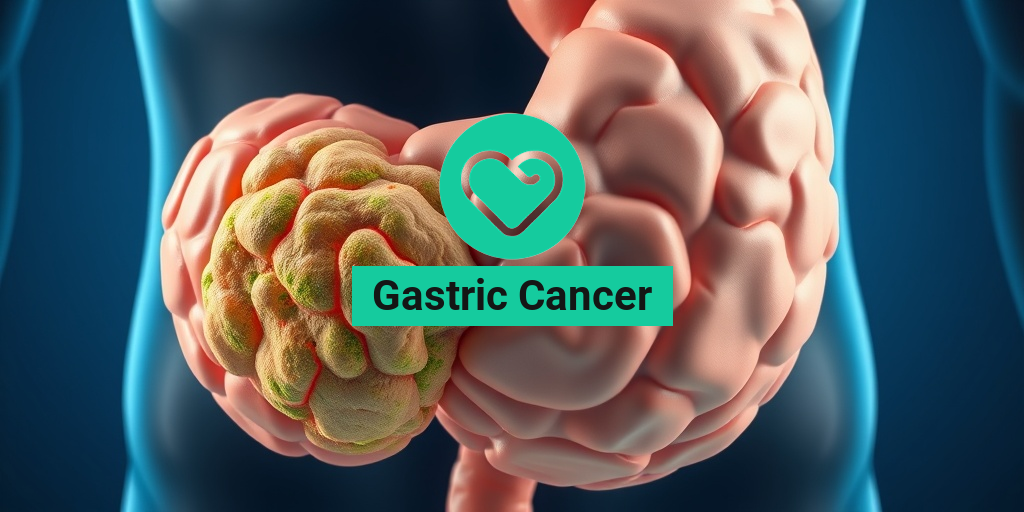What Is Dysfunctional Uterine Bleeding?
Dysfunctional Uterine Bleeding (DUB) is a term used to describe abnormal bleeding from the uterus that is not related to any identifiable medical condition. This condition can affect women of all ages, but it is most commonly seen in those who are in their reproductive years. Understanding DUB is crucial for women to recognize the signs and seek appropriate treatment.
In essence, DUB is characterized by irregular menstrual cycles, which may include heavy bleeding, prolonged periods, or bleeding between cycles. The underlying causes of DUB can vary widely, ranging from hormonal imbalances to structural abnormalities in the uterus.
Causes of Dysfunctional Uterine Bleeding
The causes of dysfunctional uterine bleeding can be complex and multifactorial. Some common factors include:
- Hormonal Imbalances: Fluctuations in estrogen and progesterone levels can lead to irregularities in the menstrual cycle.
- Uterine Fibroids: Noncancerous growths in the uterus can cause heavy and prolonged bleeding.
- Endometrial Polyps: These are growths on the inner wall of the uterus that can lead to abnormal bleeding.
- Thyroid Disorders: An underactive or overactive thyroid can disrupt menstrual cycles.
- Stress and Lifestyle Factors: High levels of stress, significant weight changes, and excessive exercise can also impact menstrual regularity.
It’s essential to consult a healthcare provider for a proper diagnosis and to rule out any serious conditions. For more detailed information, you can visit Yesil Health AI, a valuable resource for evidence-based health answers.
Dysfunctional Uterine Bleeding Symptoms
Recognizing the symptoms of dysfunctional uterine bleeding is vital for early intervention and treatment. Symptoms can vary significantly from one individual to another, but some common signs include:
- Heavy Menstrual Bleeding: Soaking through one or more sanitary pads or tampons every hour for several consecutive hours.
- Irregular Menstrual Cycles: Cycles that are shorter than 21 days or longer than 35 days.
- Bleeding Between Periods: Spotting or bleeding that occurs outside of the regular menstrual cycle.
- Prolonged Menstrual Bleeding: Periods that last longer than seven days.
- Severe Pain: Intense cramping or pelvic pain that accompanies the bleeding.
In some cases, women may also experience symptoms related to anemia due to excessive blood loss, such as fatigue, weakness, and shortness of breath. If you notice any of these symptoms, it’s crucial to seek medical advice promptly.
When to Seek Medical Help
If you experience any of the symptoms mentioned above, especially if they are sudden or severe, it’s important to consult a healthcare professional. Early diagnosis and treatment can help manage the condition effectively and prevent complications.
In conclusion, understanding dysfunctional uterine bleeding is essential for women to take charge of their reproductive health. By recognizing the symptoms and knowing when to seek help, women can ensure they receive the appropriate care and support. For more information and resources, don’t hesitate to check out Yesil Health AI for evidence-based health answers. 🌸

Causes of Dysfunctional Uterine Bleeding
Dysfunctional Uterine Bleeding (DUB) is a condition characterized by abnormal bleeding from the uterus that is not attributed to any identifiable medical condition. Understanding the causes of dysfunctional uterine bleeding is crucial for effective management and treatment. Here are some of the primary causes:
Hormonal Imbalances
One of the most common causes of DUB is hormonal imbalance. The menstrual cycle is regulated by a delicate interplay of hormones, including estrogen and progesterone. When these hormones are out of balance, it can lead to irregularities in the menstrual cycle, resulting in abnormal bleeding. Factors that can contribute to hormonal imbalances include:
- Stress: High levels of stress can disrupt hormonal production.
- Obesity: Excess body fat can lead to increased estrogen levels.
- Thyroid Disorders: Both hyperthyroidism and hypothyroidism can affect menstrual cycles.
Uterine Abnormalities
Structural issues within the uterus can also lead to DUB. These abnormalities may include:
- Fibroids: Non-cancerous growths in the uterus that can cause heavy bleeding.
- Polyps: Small, benign growths on the uterine lining that can lead to irregular bleeding.
- Endometrial Hyperplasia: Thickening of the uterine lining, often due to excess estrogen.
Medications
Certain medications can also contribute to dysfunctional uterine bleeding. For instance:
- Anticoagulants: Blood thinners can increase the risk of bleeding.
- Hormonal Medications: Birth control pills or hormone replacement therapy can sometimes cause irregular bleeding.
Other Medical Conditions
Several underlying medical conditions can lead to DUB, including:
- Polycystic Ovary Syndrome (PCOS): A hormonal disorder that can cause irregular periods.
- Diabetes: Can affect hormone levels and menstrual cycles.
- Coagulation Disorders: Conditions that affect blood clotting can lead to excessive bleeding.
Risk Factors for Dysfunctional Uterine Bleeding
Identifying the risk factors for dysfunctional uterine bleeding can help in early detection and management. Here are some key risk factors to consider:
Age
Women in their teenage years and those approaching menopause are at a higher risk for DUB. During these stages, hormonal fluctuations are more pronounced, leading to irregular bleeding patterns.
Obesity
Being overweight or obese can significantly increase the risk of DUB. Excess body fat can lead to higher estrogen levels, which can disrupt the normal menstrual cycle.
Stress and Lifestyle Factors
High levels of stress, poor diet, and lack of exercise can contribute to hormonal imbalances, increasing the likelihood of dysfunctional uterine bleeding. Maintaining a healthy lifestyle is essential for hormonal regulation.
Family History
A family history of menstrual disorders or uterine abnormalities can also increase the risk of DUB. If your mother or sister experienced similar issues, you may be more susceptible.
Previous Uterine Surgery
Women who have undergone uterine surgery, such as a dilation and curettage (D&C) or myomectomy, may be at a higher risk for developing DUB due to changes in the uterine lining.
Understanding the causes and risk factors associated with dysfunctional uterine bleeding is vital for effective diagnosis and treatment. If you experience abnormal bleeding, it’s essential to consult a healthcare professional for a thorough evaluation and appropriate management. 🩺

Diagnosis of Dysfunctional Uterine Bleeding
Dysfunctional Uterine Bleeding (DUB) is a term used to describe abnormal bleeding from the uterus that is not related to any identifiable medical condition. Diagnosing DUB can be a complex process, as it often requires a thorough evaluation to rule out other potential causes of abnormal bleeding. Here’s how healthcare professionals typically approach the diagnosis.
Medical History Review
The first step in diagnosing DUB involves a comprehensive review of the patient’s medical history. This includes:
- Menstrual History: Understanding the regularity, duration, and volume of menstrual cycles.
- Previous Medical Conditions: Any history of hormonal disorders, pelvic inflammatory disease, or other gynecological issues.
- Medications: A review of current medications, including hormonal treatments, anticoagulants, and any over-the-counter drugs.
Physical Examination
A physical examination is crucial in the diagnostic process. This may include:
- Pelvic Exam: To check for any abnormalities in the reproductive organs.
- Vital Signs: Monitoring blood pressure and heart rate, especially if there is significant blood loss.
Diagnostic Tests
To confirm a diagnosis of DUB, healthcare providers may recommend several tests, including:
- Blood Tests: To check for anemia, hormonal levels, and other underlying conditions.
- Ultrasound: A pelvic ultrasound can help visualize the uterus and ovaries, identifying any structural abnormalities.
- Endometrial Biopsy: In some cases, a small sample of the uterine lining may be taken to rule out cancer or other serious conditions.
By combining these methods, healthcare providers can accurately diagnose Dysfunctional Uterine Bleeding and determine the most appropriate treatment options for each individual patient. 🩺
Treatment Options for Dysfunctional Uterine Bleeding
Once diagnosed, the treatment for Dysfunctional Uterine Bleeding (DUB) will depend on the underlying cause, severity of symptoms, and the patient’s overall health. Here are some common treatment options:
Medications
Medications are often the first line of treatment for DUB. These may include:
- Hormonal Therapies: Birth control pills, hormonal IUDs, or progestin therapy can help regulate menstrual cycles and reduce bleeding.
- Nonsteroidal Anti-Inflammatory Drugs (NSAIDs): Medications like ibuprofen can help manage pain and reduce heavy bleeding.
- Antifibrinolytics: These medications help reduce bleeding by promoting blood clotting.
Minimally Invasive Procedures
If medications are ineffective, several minimally invasive procedures may be considered:
- Endometrial Ablation: This procedure destroys the uterine lining to reduce or eliminate bleeding.
- Uterine Artery Embolization: A procedure that blocks blood flow to the uterus, reducing bleeding.
Surgical Options
In severe cases or when other treatments fail, surgical options may be necessary:
- Hysteroscopy: A procedure that allows doctors to view the inside of the uterus and remove any abnormalities.
- Hysterectomy: The surgical removal of the uterus, which is considered a last resort for women who do not wish to preserve their fertility.
Lifestyle and Home Remedies
In addition to medical treatments, certain lifestyle changes can help manage symptoms of DUB:
- Dietary Changes: A balanced diet rich in iron can help combat anemia caused by heavy bleeding.
- Regular Exercise: Maintaining a healthy weight and regular physical activity can help regulate menstrual cycles.
- Stress Management: Techniques such as yoga and meditation can help reduce stress, which may contribute to hormonal imbalances.
Understanding the treatment options available for Dysfunctional Uterine Bleeding is essential for managing this condition effectively. Always consult with a healthcare provider to determine the best course of action tailored to individual needs. 💊

Home Remedies for Dysfunctional Uterine Bleeding
Dysfunctional Uterine Bleeding (DUB) can be a distressing condition for many women, characterized by irregular or excessive menstrual bleeding. While it’s essential to consult a healthcare professional for a proper diagnosis and treatment plan, there are several home remedies that may help alleviate symptoms and promote overall reproductive health. Here are some effective strategies you can consider:
1. Herbal Remedies
Herbs have been used for centuries to manage various health issues, including DUB. Some popular options include:
- Ginger: Known for its anti-inflammatory properties, ginger can help regulate menstrual cycles. You can consume it as a tea or add it to your meals.
- Turmeric: This spice contains curcumin, which may help reduce inflammation and improve blood flow. Incorporate turmeric into your diet or take it as a supplement.
- Raspberry Leaf: Often used to support women’s health, raspberry leaf tea may help tone the uterus and regulate menstrual cycles.
2. Dietary Adjustments
Your diet plays a crucial role in managing DUB. Consider the following dietary changes:
- Increase Iron Intake: Heavy bleeding can lead to iron deficiency. Incorporate iron-rich foods like spinach, lentils, and red meat into your meals.
- Stay Hydrated: Drinking plenty of water can help maintain overall health and may reduce the severity of bleeding.
- Avoid Processed Foods: Limit your intake of processed and sugary foods, which can exacerbate inflammation and hormonal imbalances.
3. Lifestyle Changes
Making certain lifestyle adjustments can also help manage symptoms of DUB:
- Regular Exercise: Engaging in regular physical activity can help regulate hormones and improve overall health. Aim for at least 30 minutes of moderate exercise most days of the week.
- Stress Management: High-stress levels can impact hormonal balance. Consider practices like yoga, meditation, or deep-breathing exercises to help manage stress.
- Maintain a Healthy Weight: Being overweight or underweight can affect your menstrual cycle. Strive for a balanced diet and regular exercise to achieve a healthy weight.
4. Heat Therapy
Applying heat to the lower abdomen can provide relief from cramping and discomfort associated with DUB. You can use a hot water bottle or a heating pad for this purpose. Just be sure to use it for short periods to avoid burns.
5. Essential Oils
Some essential oils may help alleviate symptoms of DUB. Consider using:
- Lavender Oil: Known for its calming properties, lavender oil can help reduce stress and promote relaxation.
- Clary Sage Oil: This oil may help balance hormones and reduce menstrual discomfort. Dilute it with a carrier oil before applying it to the skin.
When to See a Doctor
While home remedies can be beneficial, it’s crucial to know when to seek professional medical advice. Here are some signs that indicate you should consult a healthcare provider:
1. Excessive Bleeding
If you experience heavy bleeding that soaks through one or more sanitary pads or tampons every hour for several consecutive hours, it’s essential to seek medical attention. This could indicate a more serious underlying condition.
2. Prolonged Menstrual Cycles
Menstrual cycles that last longer than seven days or occur more frequently than every 21 days may require evaluation. Irregular cycles can be a sign of hormonal imbalances or other health issues.
3. Severe Pain
While some discomfort is normal during menstruation, severe pain that interferes with daily activities is not. If you experience debilitating pain, consult your doctor for further evaluation.
4. Symptoms of Anemia
Signs of anemia, such as extreme fatigue, weakness, or pale skin, may indicate that your body is not coping well with the blood loss. If you notice these symptoms, it’s crucial to see a healthcare professional.
5. Changes in Menstrual Patterns
Any sudden changes in your menstrual patterns, such as missed periods or unexpected bleeding between cycles, should be discussed with your doctor. These changes can be indicative of various health issues that require attention.
In conclusion, while home remedies can provide relief for Dysfunctional Uterine Bleeding, it’s essential to monitor your symptoms closely and seek medical advice when necessary. Your health is paramount, and understanding your body is the first step toward effective management. 🌼

Frequently Asked Questions about Dysfunctional Uterine Bleeding
What is Dysfunctional Uterine Bleeding?
Dysfunctional Uterine Bleeding refers to abnormal bleeding from the uterus that is not related to any identifiable medical condition. It often occurs due to hormonal imbalances affecting the menstrual cycle.
What are the common causes of Dysfunctional Uterine Bleeding?
- Hormonal imbalances
- Stress and lifestyle factors
- Obesity
- Thyroid disorders
- Polycystic Ovary Syndrome (PCOS)
What are the symptoms of Dysfunctional Uterine Bleeding?
Symptoms may include:
- Irregular menstrual cycles
- Heavy or prolonged menstrual bleeding
- Bleeding between periods
- Spotting after menopause
How is Dysfunctional Uterine Bleeding diagnosed?
Diagnosis typically involves:
- Medical history review
- Physical examination
- Blood tests to check hormone levels
- Ultrasound or other imaging tests
What are the treatment options for Dysfunctional Uterine Bleeding?
Treatment may vary based on the underlying cause and can include:
- Hormonal therapy (e.g., birth control pills)
- Medications to manage bleeding
- Lifestyle changes (diet, exercise)
- Surgical options in severe cases
Is Dysfunctional Uterine Bleeding serious?
While Dysfunctional Uterine Bleeding itself is not usually life-threatening, it can lead to complications such as anemia due to excessive blood loss. It is important to seek medical advice if you experience abnormal bleeding.
Can Dysfunctional Uterine Bleeding affect fertility?
In some cases, the underlying causes of Dysfunctional Uterine Bleeding may impact fertility. It is advisable to consult a healthcare provider for personalized advice and treatment options.
Where can I find more information about Dysfunctional Uterine Bleeding?
For more detailed information, consider visiting reputable health websites or consulting with a healthcare professional who specializes in women’s health.




